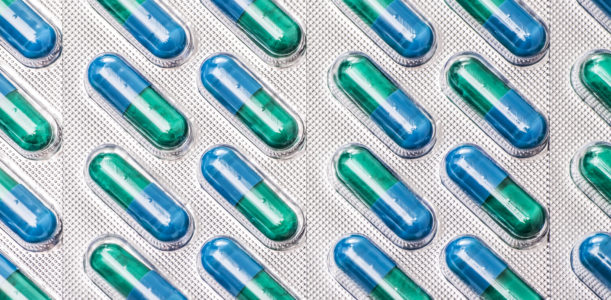How To Host A Drug Take Back Day
December 28, 2022 | Pharmaceutical Waste Disposal

What are the benefits of a drug take back event?
Did you know that in 2022, drug overdose is the leading cause of injury death in the U.S.? And the majority of those deaths are linked to an opioid overdose. From 2010 to 2014, eight out of the top ten drugs most prevalent in causing overdose deaths were these types of medications. These include drugs such as oxycodone, morphine, diazepam and alprazolam.
The U.S. Department of Justice’s Drug Enforcement Administration (DEA) organizes a National Prescription Drug Take Back Day twice a year, held at the end of April and October. Here, local police stations and other community locations offer free prescription drug disposal for the public. This program has been well received. In just one of the events from 2021, over 4,200 law enforcement agencies at close to 5,000 locations participated, collecting over 370 tons of medication that might otherwise have fallen into the wrong hands.
That’s a significant portion of medications that otherwise could have easily been misused. There are many scenarios and risks that make storing expired or unwanted medication unsafe, examples being:
- Children can accidentally find and ingest the medication.
- Teens and young adults could try an addictive medication for the first time.
- Friends, family, or visitors could find the medication and sell it.
- Someone addicted to prescription drugs could find it and use it.
Throwing drugs in the trash, flushing them down the toilet or washing them down the drain once were common practices. These methods pose significant dangers to the health of area residents, the purity of ground water and the environment. Prescription medication that enters the watershed of an area can even cause local extirpation of species and ecological imbalance.
Starting a Drug Take Back Program
Prior to the event, you will need to make arrangements for required personnel to have a successful drug take back event. There are certain staff requirements essential to the safe and legal conduct of an unwanted medication collection event. It is recommended to have:
- Pharmacist and assistants
- Greeters
- Law Enforcement
- Data Entry
- Event organizer / supervisor
It may take several weeks to arrange for law enforcement and pharmacists. Do not advertise a program until arrangements for these essential participants have been finalized.
Required Documents.
Determine if an EPA ID number is required and arrange for the certificate(s) of destruction. Check your local and state laws to see if any other documents are needed.
Location, Location, Location.
The location of your drug take back day matters. By hosting a drug take back event at a convenient location, you can offer residents a convenience when they may not want to travel to a police station during the limited hours of the national take back program.
Law Enforcement Resources.
The DEA’s Diversion Control Division has a list of points of contact for each state and region. Law enforcement agencies can use these contacts when wanting to host a local collection day. Law enforcement should stay on site until the container(s) of non-controlled substances are closed, labeled; effectively removing them from the site and public access. A law enforcement official should be able to have visual contact with the individuals dropping off the medications and the point of drop-off.
Effectively promote the event.
Many people are unaware of the dates of National Drug Take Back days. Some people aren’t even familiar with the concept of drug disposal. That’s why it’s important to get the word out to the community and share that this event is free. By promoting the event on social media, including local neighborhood groups on sites like Facebook and NextDoor, word can quickly spread. Outdoor signage and local media coverage are other ways to spread news of the event.
Provide information on other drug take back resources.
You don’t want to limit someone’s ability to discard pharmaceuticals if they happen to miss a take back event. Provide helpful links to year-round drug collection sites, such as the DEA’s Controlled Substance Public Disposal Locations Search Utility. It allows users to put in as little information as a zip code and returns results for the closest permanent collection sites, which typically are located within many pharmacies.
Explain what is NOT accepted at your drug take back program.
Although drug take back events offer a convenient way for residents to properly dispose of medications. There’s certain items that should not be collected. These include:
- Any hydrogen peroxide or iodine containing medications
- Any aerosol medications such as asthma inhalers
- Thermometers
- Alcohol or illegal drugs
- Syringes, needles and other sharps
The DEA has begun to allow vape cartridges to be collected, providing that the battery element is removed prior to submission.
How do you dispose of medication from a drug take back day?
First, it’s important to follow all state, county and local protocols involving the safe disposal of medications. Using a turnkey solution for drug disposal like Rx Destroyer can make the process simple. Rx Destroyer is a patented formula that denatures pharmaceuticals and renders it irretrievable. That means it’s no longer a threat to groundwater, the environment, or to the community.
Rx Destroyer is DEA compliant, making it the essential final step in hosting a take back program. Using a denaturing solution like Rx Destroyer helps diminish the chances of medications being misplaced or stolen. Here, they are safely contained and neutralized. It’s why law enforcement offices, clinics, schools and corrections facilities choose Rx Destroyer. Learn more about the product and how Rx Destroyer can help ensure full DEA compliance, by contacting us here.

